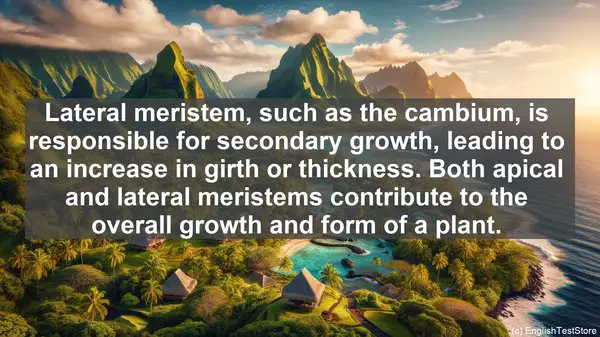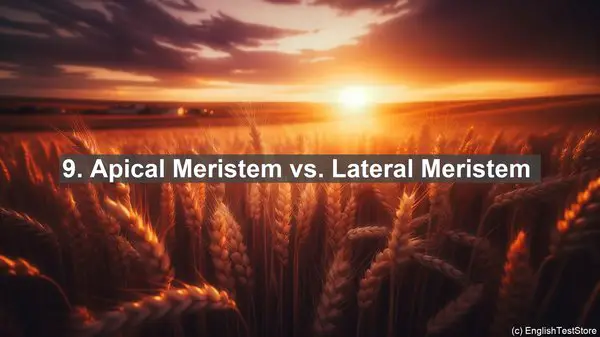Introduction to Plant Biophysics
Welcome to our lesson on the top 10 commonly confused words in plant biophysics. Plant biophysics is a fascinating field that combines the principles of physics and biology to understand the inner workings of plants. From the way they transport water to how they respond to light, every aspect of a plant’s life is governed by intricate processes. However, in this complexity, certain words often lead to confusion. Let’s dive in!
1. Transpiration vs. Evaporation
Transpiration and evaporation are terms that are often used interchangeably, but they have distinct meanings. Transpiration refers to the process by which plants lose water through their leaves. It’s a vital mechanism for nutrient uptake and temperature regulation. On the other hand, evaporation is the conversion of liquid water into vapor, usually occurring from non-living surfaces like soil or water bodies. While both involve water loss, the driving forces and contexts differ.

2. Photosynthesis vs. Respiration
Photosynthesis and respiration are fundamental processes in a plant’s life. Photosynthesis is the process by which plants convert light energy into chemical energy, producing glucose and releasing oxygen. It’s a key contributor to the Earth’s oxygen levels. Respiration, on the other hand, is the process by which plants break down glucose to release energy for their metabolic activities. While photosynthesis occurs in the presence of light, respiration occurs continuously.
3. Tropism vs. Nastic Movements
Plants exhibit various movements in response to stimuli. Tropism refers to the growth or movement of a plant in response to a directional stimulus, such as light or gravity. For example, phototropism is the bending of a plant towards light. Nastic movements, on the other hand, are non-directional responses to stimuli, typically reversible. An example is the closing of a Venus flytrap’s leaves when triggered. Both tropism and nastic movements are fascinating adaptations.
4. Xylem vs. Phloem
Xylem and phloem are two types of vascular tissues in plants. Xylem is responsible for transporting water and minerals from the roots to the rest of the plant. It’s like the plant’s plumbing system. Phloem, on the other hand, transports sugars and other organic compounds, such as hormones, to different parts of the plant. It’s like the plant’s highway for nutrient distribution. Both xylem and phloem are crucial for a plant’s survival and growth.
5. Stomata vs. Lenticels
Stomata and lenticels are structures involved in gas exchange in plants. Stomata are tiny openings, primarily found on the underside of leaves. They regulate the entry of gases, such as carbon dioxide and oxygen, and the exit of water vapor. Lenticels, on the other hand, are small openings in the bark of woody stems and roots. They allow for gas exchange in older, non-photosynthetic tissues. Both stomata and lenticels play vital roles in maintaining plant health.

6. Gravitropism vs. Thigmotropism
Plants have fascinating responses to gravity and touch. Gravitropism is the growth or movement of a plant in response to gravity. For example, roots exhibit positive gravitropism, growing downwards. Thigmotropism, on the other hand, is the growth or movement of a plant in response to touch or mechanical stimulation. An example is a vine wrapping around a support structure. Both gravitropism and thigmotropism are essential for a plant’s anchorage and orientation.
7. Auxin vs. Gibberellin
Auxin and gibberellin are plant hormones that regulate various growth processes. Auxin is primarily involved in cell elongation, root development, and tropic responses. It’s like the plant’s growth hormone. Gibberellin, on the other hand, promotes stem elongation, seed germination, and flowering. It’s like the plant’s development hormone. Both auxin and gibberellin, along with other hormones, orchestrate the complex growth and development patterns we observe in plants.
8. Chlorophyll vs. Carotenoid
Chlorophyll and carotenoid are pigments involved in photosynthesis. Chlorophyll, with its green color, is the primary pigment that captures light energy. It’s like the plant’s solar panel. Carotenoids, on the other hand, have various colors, including red, orange, and yellow. They act as accessory pigments, broadening the range of light wavelengths that can be absorbed. Both chlorophyll and carotenoids are essential for efficient light capture during photosynthesis.
9. Apical Meristem vs. Lateral Meristem
Meristems are regions of active cell division in plants, responsible for growth and development. Apical meristem, found at the tips of roots and shoots, is involved in primary growth, leading to an increase in length. Lateral meristem, such as the cambium, is responsible for secondary growth, leading to an increase in girth or thickness. Both apical and lateral meristems contribute to the overall growth and form of a plant.
10. Senescence vs. Dormancy
Senescence and dormancy are two states in a plant’s life cycle. Senescence refers to the aging and eventual death of plant tissues or organs. It’s a natural process, often observed in leaves during autumn. Dormancy, on the other hand, is a state of reduced activity or growth, typically occurring during unfavorable conditions, such as winter. It’s like the plant’s hibernation. Both senescence and dormancy are adaptive strategies for a plant’s survival.
